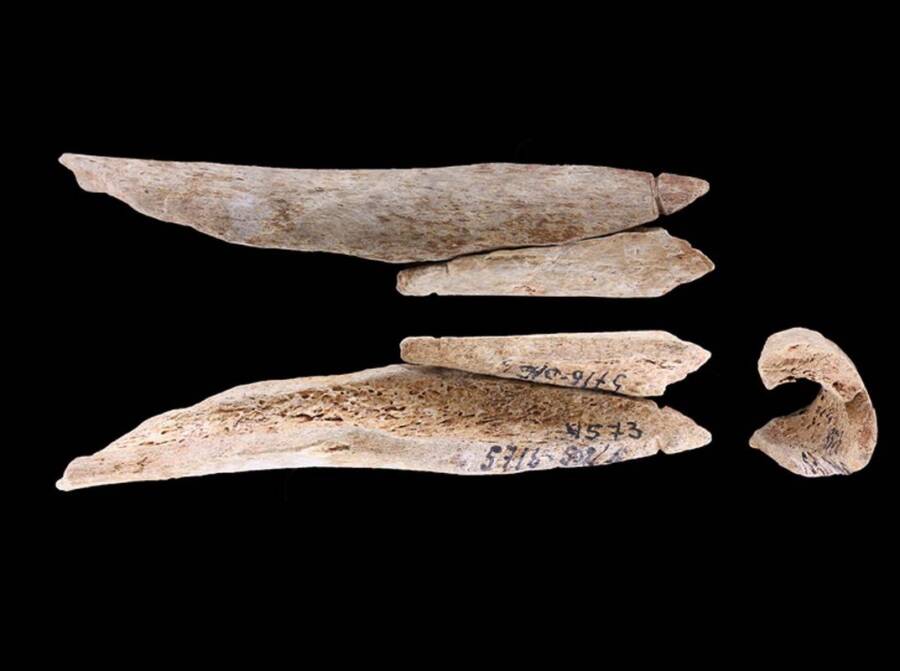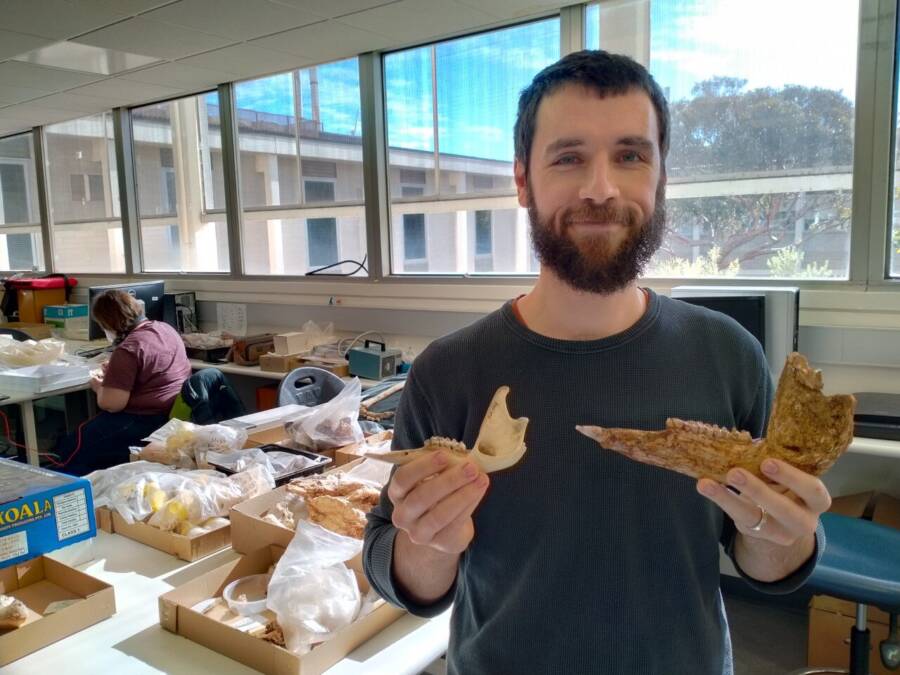Human bone jewelry uncovered in Russia, pipe tomahawk returned to the Ponca tribe, giant prehistoric kangaroo found in Papua New Guinea.
6,000-Year-Old Jewelry Made From Human Bones Unearthed From Graves In Northern Russia

University of HelsinkiThough human bone jewelry could be the result of everything from memorials for fallen loved ones to cannibalism, the history behind these Stone Age keepsakes ultimately remains mysterious.
Archaeologists in Russia just discovered that a large sample of Stone Age jewelry uncovered on a remote island in Russia was made from human bones. More than 80 years after scientists determined that this 6,000-year-old jewelry was made from elk, beaver, and bear bones, new research has revealed that much of it was actually made from human remains. And though the bones bear no cut marks left behind after scraping the meat clean, the researchers say that cannibalism cannot be ruled out.
Learn more about this disturbing discovery here.
Harvard Returns Chief Standing Bear’s Pipe Tomahawk To The Ponca Tribe After Decades

Heyn/Library of Congress/Corbis/VCG via Getty ImagesChief Standing Bear circa 1899-1900.
After a campaign by Nebraska politicians and descendants of Ponca Chief Standing Bear, Harvard has agreed to return a pipe tomahawk that the legendary Native American civil rights leader once gave to a lawyer as a symbol of thanks.
“We talk about generational trauma, but we don’t talk about generational healing,” Stacy Laravie, a descendant of Standing Bear who traveled to Harvard for the repatriation ceremony, said in a statement.
Dig deeper in this report.
Scientists Just Identified A Giant Kangaroo That Lived In Papua New Guinea 50,000 Years Ago

Flinders UniversityFlinders University paleontology researcher Isaac Kerr with an Australian kangaroo jaw bone, and the fossil jaw used in the study.
Paleontologists studying the Chimbu Province region in the mountains of central Papua New Guinea have made a gargantuan discovery — a fossil of a genus of giant kangaroo that went extinct 42,000 years ago.
But these creatures are less related to modern-day kangaroos than they are to a primitive genus that is — so far — unique to Papua New Guinea.
Read on here.





